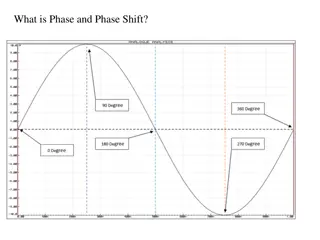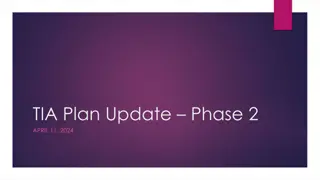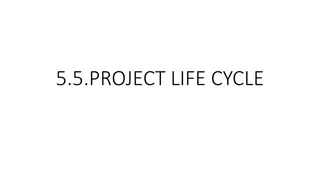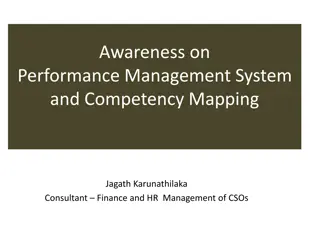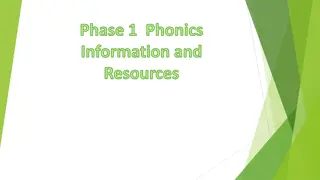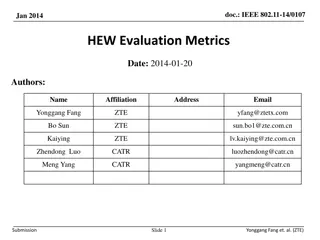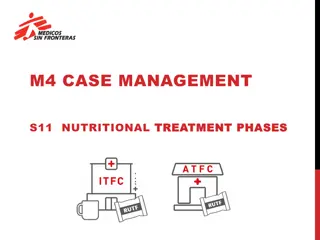Evaluation of NIPN Phase I Performance
This evaluation assesses the performance of NIPN Phase I, focusing on relevance, coherence, effectiveness, impact, and sustainability. The study aims to provide actionable recommendations for future implementation, analyzing achievement of intended results and contribution to indirect outcomes.
Uploaded on Feb 16, 2025 | 0 Views
Download Presentation

Please find below an Image/Link to download the presentation.
The content on the website is provided AS IS for your information and personal use only. It may not be sold, licensed, or shared on other websites without obtaining consent from the author.If you encounter any issues during the download, it is possible that the publisher has removed the file from their server.
You are allowed to download the files provided on this website for personal or commercial use, subject to the condition that they are used lawfully. All files are the property of their respective owners.
The content on the website is provided AS IS for your information and personal use only. It may not be sold, licensed, or shared on other websites without obtaining consent from the author.
E N D
Presentation Transcript
NIPN Contribution Study Preliminary findings June 2023 June 2023
Introduction Objectives 1. To evaluate the performance of the NIPN Phase I. 2. To understand whether any changes are needed to NIPN s approach to inform future implementation. 3. To provide actionable recommendations that inform the future implementation. The study assesses the (1) relevance, (2) coherence, (3) effectiveness, (4) impact and (5) sustainability of NIPN Phase 1 both globally and within countries. Differentiated between assessing the achievement of intended results (outputs and direct outcomes) and NIPN s contribution to indirect outcomes (impact). n4d.group
Research questions Relevance: How relevant is the NIPN approach in driving optimal policy and programme approaches to address malnutrition? Coherence: To what extent is NIPN coordinating and collaborating with relevant initiatives and actors to achieve results? Effectiveness: To what degree is NIPN achieving its results (direct outcomes)? Impact: To what extent have NIPN activities implemented in Phase 1 contributed to impact (indirect outcomes)? Sustainability: To what extent will results be sustained to strengthen national capacities for evidence-based nutrition policy and programming? n4d.group
Approach and methodology The evaluation assesses the performance of Phase 1 of NIPN between 2016 to 2021 across all target countries (achievement of outputs and direct outcomes) and its potential contribution to indirect outcomes. Theory-based approach based on a review of NIPN s existing theory of change (ToC) to strengthen the logic model of NIPN. Mixed method approach, collecting data through programme documents and conducting KIIs with stakeholders in all NIPN countries as well as globally. Case study approach to understand level of effectiveness and impact across NIPN countries: Deep dive countries: Niger, Kenya and Bangladesh Contribution Analysis as the main evaluative approach to assess NIPN s contribution to indirect outcomes highlighted in the revised ToC. n4d.group
Revised Theory of Change n4d.group
Limitations Data limited to programme documents shared with the evaluation team. Not all priority stakeholders from all NIPN countries available to be interviewed. Significantly more interviews were held for deep dive case study countries, thus examples are heavily reliant on deep dive countries. A comprehensive Contribution Analysis requires a range of data sources to triangulate contribution to indirect outcomes. Lack of available data has made contribution story difficult to assemble. n4d.group
Relevance Unanimity in the original conceptualisation of NIPN given demand for more and better data and evidence. Theory of Change, technical guidance & operational documents have evolved appropriately since 2014. NIPN has morphed from a data-driven to a policy-led initiative where data analysis aims to strengthen and inform policy on malnutrition. Following the MTR and the EU push for NIPN to sit under C4N within GIZ/BMZ, NIPN has/is being better supported and equipped to achieve its objectives. The operational set up and design of NIPN makes it a complex initiative and it is difficult for centralised reporting and operational documents to fully capture the range of country implementation, levels of performance and to communicate results. Institutional arrangements i.e. convening ministries/institutions is a pre-requisite to achieve national ownership, multi-sector engagement and generation of policy relevant evidence. NIPN is demonstrating policy & programmatic relevance though too early to measure tangible impacts. NIPN has shown it is able to be responsive to country needs such as mapping of programmes and convergence indicators, and nexus monitoring. In some countries, growing interest in NIPN supporting the development of nutrition finance tracking. NIPN not embedded in the global ecosystem to be able to respond to globally identified policy and programme related priorities and needs n4d.group
Coherence In early stages, NIPN shared lessons and communicated its approach and outcomes at the global and regional level and more recently the focus has been at the Global Gatherings. The lack of more strategic engagement between NIPN and SUN at the global level and via the newly formed regional hubs is surprising. Opportunities exist to form more strategic alliances between the two initiatives. The institutional set up of NIPN has been vital to the engagement with allied sectors. Countries vary enormously in degree of engagement and collaboration with other country actors and there is recognition across all countries that improving communication with other actors is a priority for Phase 2. Communication and visibility plans should help to ensure synergies are being harnessed. However, adherence to plans has been inconsistent and opportunities for better engagement with other initiatives and actors has not always been realised. There are gaps in engagement within NIPN countries including humanitarian data, the EC-NIS initiative and other data systems including HIS. n4d.group
Effectiveness Countries feel well supported by C4N (Brussels and Technical Consultants) in terms of guidance, peer interactions and facilitating at the inception of NIPN. NIPNs integration into government information systems and structures is essential for its effectiveness and created a strong sense of national ownership in several countries laying the foundations for longer-term sustainability. The policy question formulation process undertaken in all countries in Phase 1 has progressed well although some countries have achieved more than others. The policy cycle analysis has strengthened partnerships between NIPN and numerous stakeholders. The NIPN data dashboards/repositories were all developed in Phase 1, but the extent of their use and updating varies extensively. There is no systematic monitoring of dashboard uptake/use Policy outputs have been produced in all countries but most have not been able to determine utility through evaluation or uptake. n4d.group
Effectiveness Capacity strengthening is a focus for all NIPNs and is an appropriate approach to support localisation and government ownership. It has had a substantial impact on increasing understanding of the role of nutrition in sector programmes and monitoring systems for implementation in some countries. The focus of capacity building has been at the national level, but this now needs to scale to the sub-national level to be even more effective. Staff turnover within national governments is a clear barrier to sustained capacity strengthening. The complexity of sub-national roll out should not be underestimated as the success of devolved NIPN will depend on the resources, capacities and institutional arrangements which vary enormously. n4d.group
Impact In some countries, NIPN has informed and is now playing a key role in monitoring national nutrition action plans and nutrition sensitive sector programming. Extensive work has/is happening in several countries on sector indicators both to align with multi- sectoral plans. NIPN is also strengthening country ability to track nutrition progress through re-analysis of survey data and through sector surveys. Critical barriers that prohibit NIPN s ability to strengthen countries ability to track nutrition progress include lack of quality data available and inability to coordinate across ministries. The policy outputs (briefing and technical notes) are beginning to inform multi-sector and sectoral plans and priorities. The NIPN dashboards are widely seen as a vital tool that provide a 'one-stop shop' for policymakers and a potential data repository for researchers and others. n4d.group
Impact There is recognition across all countries that NIPN needs longer to inform and influence multisectoral policymaking and investments on nutrition, particularly given the delay in establishing NIPN in Phase 1 and during the transition to Phase 2. There is a widely-held belief that in some countries NIPN has created the enabling environment for strengthened evidence-based decision making and that in Phase 2 and beyond, NIPN outputs will directly influence and support policy development at sector and multi-sector level. n4d.group
Sustainability Limited focus on sustainability in Phase 1 as countries were establishing the platforms. Phase 2, sustainability has been a priority. Sustainability plans for each country are at varying stages. Technical Capacity strengthening activities have contributed substantially to technical sustainability. Promising examples of technical sustainability have utilized relationships with local researchers and institutions to build capacities. Turnover within government a risk. Financial The arrangements of NIPN in Phase 1 saw government partners were directly financed via the EUDs as an approach to foster greater government ownership and systems strengthening. Phase 2 arrangements have changed with funding going through GIZ, UNICEF, CARTIE Stakeholders in several countries believe external support will be needed for the gains of NIPN to be continued. Particularly true for the NIPNs which experienced significant delays during the inception and transition phases. Some countries are developing risk mitigation strategies. n4d.group
Sustainability Institutional Phase 1 activities have enabled a strong sense of institutional ownership in several countries- the unfortunate experience of Bangladesh highlights the critical importance of national institutional ownership for the NIPN to be sustainable. The effectiveness of multi-sectoral coordination and collaboration is critical to institutional sustainability. Some countries have been more successful than others at this. Scaling NIPN to be relevant at the sub-national level is an important strategic aim for institutional sustainability. n4d.group
Sustainability NIPN is having an impact through strengthening technical knowledge amongst sectors staff, enhancing multi- sectoral nutrition data systems, galvanizing multi-sectoral engagement and support for nutrition and in monitoring multi-sector nutrition plans-creating demand led sustainability. Sustainability of NIPN also depends on the value and inclusiveness of the PCA process and the use of country dashboards. More can be done to create greater demand for NIPN services through business case development, strategic outreach and increasing the responsiveness to emerging needs. The NIPN s financial arrangements in Phase 2 poses some degree of risk to ownership and sustainability. It would be hard to justify the ending of funding following Phase 2 given the progress and value add of NIPN and the prospects for policy influence over the next two to three years. n4d.group
Thank you n4d.group


